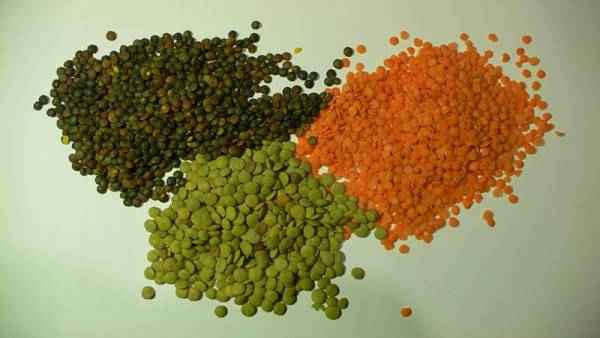
I love lentils, red, green, brown and yellow! All of these lovely legumes are a valued member in our household. Whether it is goes into a soup or a stew or even if you make burgers out of it, the health benefits of this humble little 'bean' are quite amazing.
Lentils are legumes along with other types of beans. They grow in pods that contain either one or two lentil seeds that are round, oval or heart-shaped disks and are oftentimes smaller than the tip of a pencil eraser. They may be sold whole or split into halves with the brown and green varieties being the best at retaining their shape after cooking.
Nutrients in
Lentils
1.00 cup cooked (198.00 grams)
Nutrient%Daily Value
molybdenum198%
folate89.5%
fiber62.5%
tryptophan50%
manganese49%
iron36.6%
protein35.7%
phosphorus35.6%
copper25%
vitamin B122%
potassium20.8%
Calories (229)12%
Lentils, a small but nutritionally mighty member of the legume family, are a very good source of cholesterol-lowering fiber. Not only do lentils help lower cholesterol, they are of special benefit in managing blood-sugar disorders since their high fiber content prevents blood sugar levels from rising rapidly after a meal. But this is far from all lentils have to offer. Lentils also provide good to excellent amounts of six important minerals, two B-vitamins, and protein—all with virtually no fat. The calorie cost of all this nutrition? Just 230 calories for a whole cup of cooked lentils. This tiny nutritional giant fills you up—not out.
Lentils—A Fiber All Star
Check a chart of the fiber content in foods; you'll see legumes leading the pack. Lentils, like other beans, are rich in dietary fiber, both the soluble and insoluble type. Soluble fiber forms a gel-like substance in the digestive tract that snares bile (which contains cholesterol)and ferries it out of the body. Research studies have shown that insoluble fiber not only helps to increase stool bulk and prevent constipation, but also helps prevent digestive disorders like irritable bowel syndrome and diverticulosis.
Love Your Heart—Eat Lentils
In a study that examined food intake patterns and risk of death from coronary heart disease, researchers followed more than 16,000 middle-aged men in the U.S., Finland, The Netherlands, Italy, former Yugoslavia, Greece and Japan for 25 years. Typical food patterns were: higher consumption of dairy products in Northern Europe; higher consumption of meat in the U.S.; higher consumption of vegetables, legumes, fish, and wine in Southern Europe; and higher consumption of cereals, soy products, and fish in Japan. When researchers analyzed this data in relation to the risk of death from heart disease, they found that legumes were associated with a whopping 82% reduction in risk!! Lentils are believed to have originated in central Asia, having been consumed since prehistoric times. They are one of the first foods to have ever been cultivated. Lentil seeds dating back 8000 years have been found at archeological sites in the Middle East. Lentils were mentioned in the Bible both as the item that Jacob traded to Esau for his birthright and as a part of a bread that was made during the Babylonian captivity of the Jewish people. For millennia, lentils have been traditionally been eaten with barley and wheat, three foodstuffs that originated in the same regions and spread throughout Africa and Europe during similar migrations and explorations of cultural tribes. Before the 1st century AD, they were introduced into India, a country whose traditional cuisine still bestows high regard for the spiced lentil dish known as dal. In many Catholic countries, lentils have long been used as a staple food during Lent. Currently, the leading commercial producers of lentils include India, Turkey, Canada, China and Syria.
Read more here :
http://www.whfoods.com/genpage.php?tname=foodspice&dbid=52
No comments:
Post a Comment